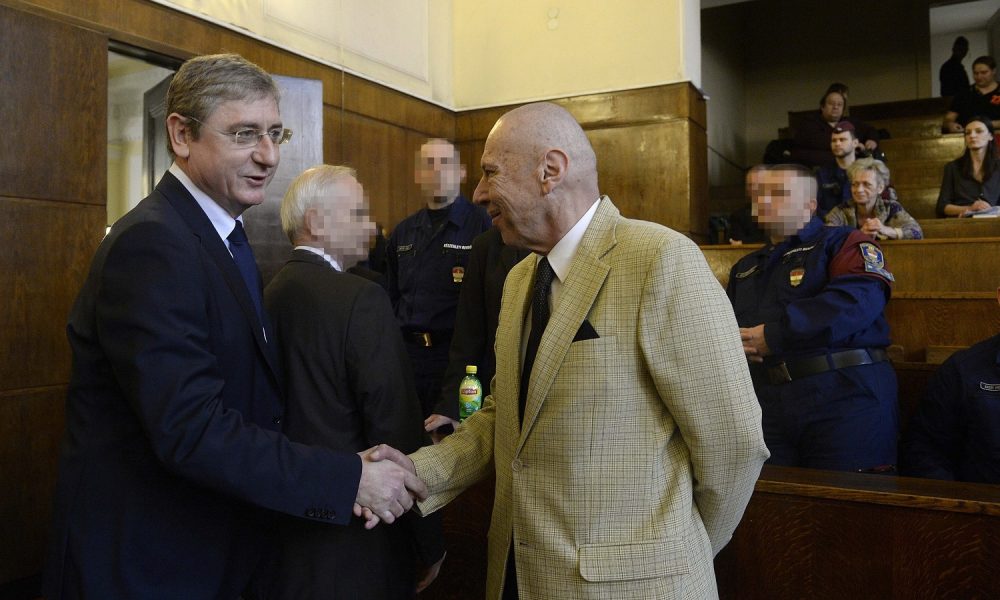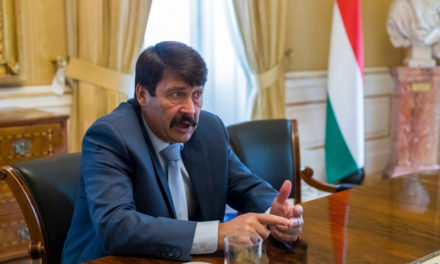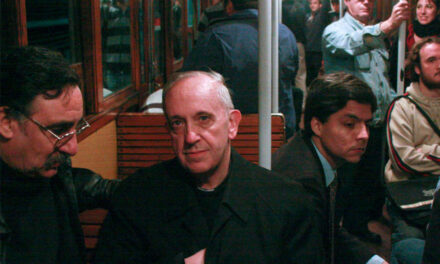In the past few days, we "celebrated" the 15th anniversary of the Ószöd speech, and in the fall we can remember with clenched fists that the police brutality against the peaceful celebrants on October 23, 2006 has had no legal consequences to this day. Put another way: fifteen years after the horrific events, we have to bear the fact that Prime Minister Ferenc Gyurcsány, who was in direct control of the police that night, has yet to be held accountable for anything.
And opposite to this is the other fact: the named Ferenc Gyurcsány is the one who controls the united opposition here and now, and if they win the spring parliamentary elections in 2022, it will be Ferenc Gyurcsány who comes back to power in this country. And maybe he'll have another chance to call out the police for beating up innocent people.
Interesting, isn't it?
The opinion of many experts, whom I highly esteem, is that there is no sufficient evidence against Gyurcsány that he had anything to do with police brutality. Presumably it is. But for the sake of order, let's take a few facts one by one, and then draw conclusions.
First, speaking of the events, I would like to quote from an October 2012 article in Magyar Nemzet: "The police brutality that peaked on the fiftieth anniversary of the revolution began with the leaking of the Ószöd speech. The protesters, who have been demanding the departure of Ferenc Gyurcsány since September 18, faced a fired-up, vengeful police force after the TV siege. Even before October 23, there were reports of official excesses, but what happened on the national holiday surpassed everything before.
During the day, there were several small clashes between the police and the protesters who were removed from Kossuth Square at dawn that day (as the court later ruled: illegally). The clashes took a sharp turn at 4:30 in the afternoon, when the police started to disperse about a thousand demonstrators with tear gas near the Parliament, on Alkotmány Street, as the protesters overthrew the cordon. The demonstrators were forced out onto Bajcsy-Zsilinszky út, and then most of the crowd crowded onto Erzsébet tér, where they later started the armored car brought there as an exhibit.
Tens of thousands of people returning home from the Fidesz-KDNP convention mingled with this group. And the police did not choose, everyone received tear gas, rubber bullets and the horse charge accompanied by swords. The clashes that lasted until two in the morning resulted in 167 injuries (including 17 police officers and 5 foreigners), of which 134 were hospitalized and 33 were hospitalized. Two of them were blinded in half of their eyes due to rubber bullets, the number of neck, head and eye injuries was 80. During the day, 153 people were produced, and 35 of them were detained. Investigative proceedings were initiated in the case of 69 persons.
Despite this, the government and the leadership of the capital were satisfied with the work of the police, and Gábor Demszky awarded Péter Gergényi, the head of the BRFK at the time, with an award for Budapest. As a result of the outrage, the Gönczöl Committee was created and several police investigations took place, but there were no concrete consequences."
That's all that happened in the Gyurcsány and Bajnai periods. There are no surprises in this, of course.
Second: after the Fidesz victory in 2010, Prime Minister Viktor Orbán asked István Balsai to investigate the events of the fall of 2006 and report on it. The report of the Balsai Committee was adopted by the Parliament in March 2012, which stated that the police leaders did not act out of a professional error, but on top political orders in the fall of 2006. According to the Balsai Committee, it would be necessary to investigate the legal and political responsibility of the then Prime Minister Ferenc Gyurcsány, and in addition, the suspicion of a terrorist act may arise in connection with him (!). According to the report, "what happened in downtown Budapest on October 23, 2006, was suitable for intimidating the population, because not only those present in public areas, but also TV viewers could have a real sense of fear."
According to the report, the police leaders - Gergényi, Bene, etc. - "they acted not out of carelessness or a simple professional error, but foreseeing the consequences of their behavior and knowing that they were restricting the right of assembly of peaceful citizens". By the way, the Balsai report was also discussed by the Parliament's constitutional, human rights and law enforcement committee, and the parliament adopted it in March 2012 with 279 yes votes to 11 no votes, with three abstentions. However, no further legal action was taken despite this.
Third: Retired Supreme Court Council President Miklós Völgyesi, who was an assistant and advisor to the Balsai Committee, filed a personal report based on the investigation in October 2011 - before the five-year statute of limitations expired! – against Ferenc Gyurcsány and the political-police leadership due to a terrorist act. And hold on now: since then, to this day, the prosecutor's office has not responded to the report, it has not officially accepted it, but it has also not rejected it - and it has been ten years now! Miklós Völgyesi gave an interview about this on FIX TV in February of this year.
Although I am not a lawyer, I would like to note this much: in my opinion, the prosecutor's office acted illegally by not responding to Miklós Völgyesi's complaint for ten years, neither for nor against. As a result, in my opinion, the statute of limitations does not stop either, since the report was made within five years - officially, legally.
Fourth: in September 2013, based on the indictment of the Central Prosecutor's Office, the trial began against the police leaders who directed the brutality of October 23, 2006, but shockingly, the prosecutor's office gave the defendants a preliminary discharge, which means that they cannot go to prison in the first place, and if even if they receive a suspended prison sentence - this can be their highest sentence - they will not have a prius either, i.e. they will remain without a criminal record (!). In addition, they were merely accused of failing to act as a superior (!), and the brutal action against the innocent celebrants did not even arise as a charge.
Nothing else can come to mind about this, except the classic film The Witness: the verdict was already before the trial. I wonder how the Debrecen department of the Central Investigative General Prosecutor's Office imagined this then?
Fifth: the trial lasted four years (!), the Capital District Court handed down its verdict in February 2017, and it was "incredibly" severe: former Budapest police captain Péter Gergényi, who was the number one controller of the police during the brutal events, was fined 400,000 for negligence as a supervisor was sentenced to a fine of HUF.
As Fidesz noted at the time: innocently convicted protesters also paid more as punishment than Péter Gergényi.
And the rest is silent...
The legal process is apparently over. The report of Miklós Völgyesi is still on the desk of the General Prosecutor's Office, but my God, there are so many papers on so many tables...
Having finished the legal part, let me make one comment: it is a fact that Ferenc Gyurcsány was in direct control of the police on that day. This was reported by Ferenc Kondorosi, the state secretary at the time, but at the request of Speaker László Kövér, Gyurcsány himself confirmed that on October 23, at the meeting of the National Security Cabinet, he continuously controlled police movements. Krisztina Morvai also spoke about the fact that Gyurcsány was there on the ominous day in the control center of the Teve Street police palace.
But even after this, it can be said (let me ironize my own statement): Gyurcsány was in charge, but no one proved that he called on the police to act brutally.
But if he was in direct control of the police that afternoon and evening, then he also saw that in some very strange way, despite his angelically benevolent instructions, the police began to beat, hit, shoot, and trample people.
Then why didn't he stop the police immediately through Gergény? Why not? In other words: he failed to stop police brutality and terrorist-suspected aggressiveness towards peaceful celebrants. And I'll end here.
I will add this in the end: we also know that the then Obama American administration "told" Hungary to leave Ferike Gyurcsány alone, whom they loved dearly. This was communicated through Gyula Budai. Well, fine, as Hofi once said in his military stories: "Shut up!" has been said, we have the common denominator.
So then let's forget about the possibility of legal accountability. However, the moral strength and moral judgment of civil society is worth more than anything, even more than the law. And not even Joe Biden can stop that. Let's just leave it at that for now.
The author is a political scientist, research consultant of the Center for Fundamental Rights, curator of the CÖF
Source: Hungarian Nation
Front page photo: Gyurcsány and Gergényi holding hands in March 2015 at the Metropolitan Court during the criminal trial of the police officers (Photo: MTI/Noémi Bruzák)













